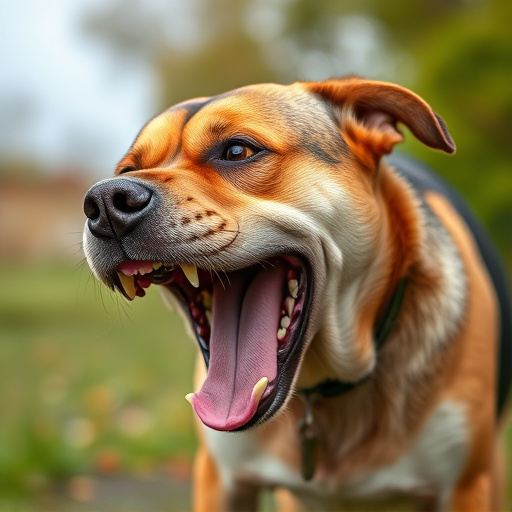Dog aggression can be managed with proper Mace spray training techniques, combining desensitization and positive reinforcement. Key practices include using safe, potent ingredients like capsaicin, mastering application at safe distances, secure storage, and consistent training sessions to build confidence in deterring aggressive behaviors through a calm response associated with the spray.
Dog attacks can be terrifying, but taking proactive measures can prevent and mitigate such incidents. This article explores an innovative solution: stop dog attack pepper spray. We delve into understanding the triggers of dog aggression, choosing the right pepper spray for dogs, safe handling and application techniques, and effective training strategies like desensitization and reinforcement. By combining these proper Mace spray dog training techniques, you can enhance your safety and that of others around you.
- Understanding Dog Aggression Triggers
- Choosing the Right Pepper Spray for Dogs
- Safe Handling and Application Techniques
- Training Strategies: Desensitization & Reinforcement
Understanding Dog Aggression Triggers
Dog aggression can stem from various triggers, and understanding these is crucial in preventing and managing potential attacks. One of the primary causes is fear or anxiety, where a dog may react aggressively when feeling threatened or cornered. Proper Mace spray dog training techniques can help mitigate this by teaching dogs to associate the scent and application of the spray with a calm response rather than fear.
Additionally, territorial behavior and protection instincts play a significant role. Dogs naturally protect their spaces and loved ones, leading to aggressive displays if they perceive an intruder. Through positive reinforcement training, owners can guide their pets to respond more calmly in such situations, using commands and cues that promote relaxation instead of aggression. This involves consistent, patient efforts to desensitize the dog to potential triggers while reinforcing desired behaviors with treats and praise.
Choosing the Right Pepper Spray for Dogs
When considering pepper spray as a deterrent for dog attacks, it’s crucial to choose the right product tailored to your needs. Not all pepper sprays are created equal; those designed for dogs differ from standard self-defense options. Look for products specifically marketed for dog training and control, ensuring they meet safety standards and contain effective yet non-lethal ingredients. Active ingredients like capsaicin, the compound found in chili peppers, are common but should be chosen based on the size and aggression of your target dog breed.
Proper application techniques are as vital as selecting the right pepper spray. Dog trainers recommend practicing with a safe distance and a dummy dog to ensure you can accurately deploy the spray when needed. Keep in mind that surprise is a powerful tool; dogs often react less aggressively when caught off guard. Regular training sessions will help you gain confidence in using the spray effectively, ensuring your safety during potential encounters.
Safe Handling and Application Techniques
Proper Mace Spray Dog Training Techniques are essential for both the safety of your pet and others. When using pepper spray on a dog, it’s crucial to handle the canister with care. Always inspect the spray before use, ensuring the nozzle is not blocked and the seal is intact. Keep the spray out of reach of children and other pets, storing it in a secure location. During training, maintain a safe distance from the dog, typically around 2-3 feet, to avoid accidental inhalation or skin irritation.
Application techniques should be gentle yet firm. Aim for the face, specifically between the eyes and nose, as this area is highly sensitive. Use short, sharp bursts of spray, allowing the dog’s eyes to water and its breathing to become affected. This brief but intense sensation will help teach the dog to associate certain behaviors with the consequences, deterring future attacks. Remember, consistent and controlled training sessions are key to success, ensuring both the dog’s comfort and effective learning.
Training Strategies: Desensitization & Reinforcement
Training dogs to respond positively to proper mace spray dog training techniques, like desensitization and reinforcement, is a powerful strategy for preventing aggressive behaviors. Desensitization involves gradually exposing the dog to the scent and effects of pepper spray in a controlled environment, starting with low concentrations and slowly increasing over time. This process helps the dog associate the spray with positive outcomes rather than fear or aggression.
Reinforcement plays a crucial role too. Rewarding calm behavior during desensitization sessions with treats or praise reinforces the association between pepper spray and positive experiences. Consistency is key; regular training sessions ensure the dog remembers these associations, making them less likely to react aggressively when exposed to pepper spray in real-life situations.
In conclusion, understanding dog aggression triggers, selecting the right pepper spray, learning safe handling techniques, and employing effective training strategies like desensitization and reinforcement are crucial components of teaching your dog proper mace spray usage. By combining these methods, you can foster responsible and safe interactions with both familiar and unfamiliar dogs, ensuring a more secure environment for everyone involved.
